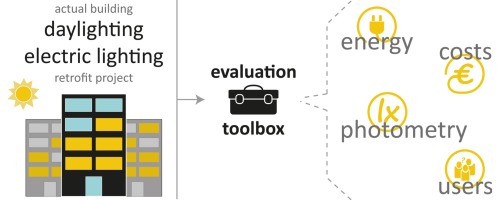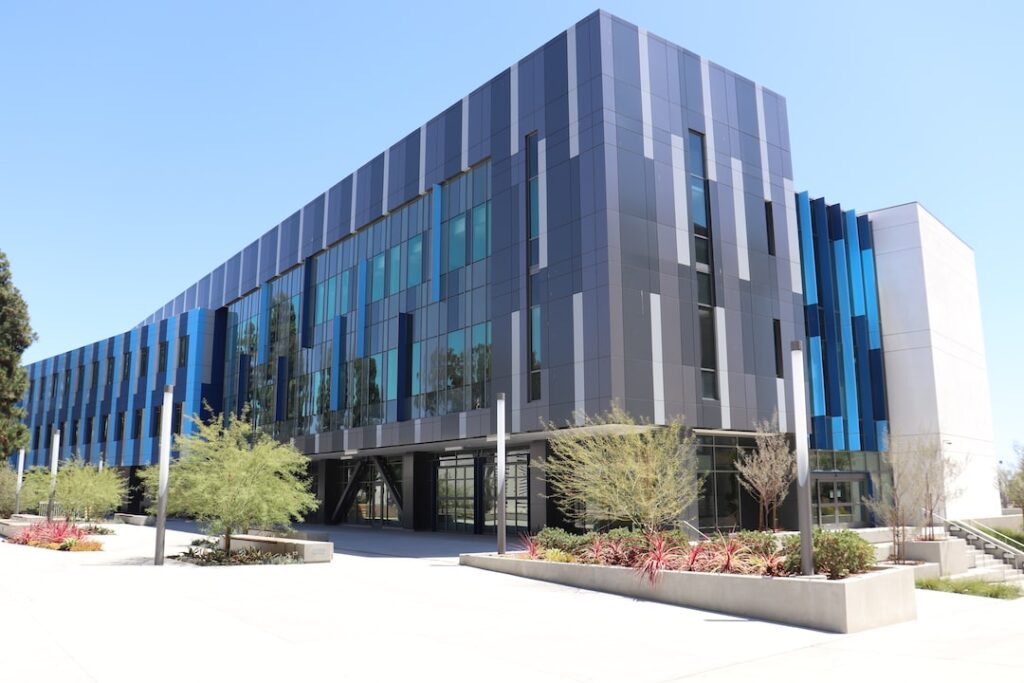Energy savings analysis has become an expected skill for a variety of building professionals, from HVAC technicians and electrical engineers to energy consultants. The International Performance Measurement and Verification Protocol (IPMVP) is the gold standard when it comes to measuring and verifying (M&V) procedures in the energy efficiency industry. In this article, we’ll give you an overview of IPMVP options A, B, C, and D.
Table of Contents
- What is IPMVP?
- What is M&V?
- IPMVP Options
- Option A: Retrofit Isolation (Key Parameter Measurement)
- Option B: Retrofit Isolation (All Parameter Measurement)
- Option C: Whole Facility
- Option D: Calibrated Simulation
- Building Envelope Optimization
- Improve Your Insulation
- Install Double or Triple-Paned Windows
- Add Weather-Stripping
- Upgrade Your HVAC System
- Use Solar Power
- Lighting Controls and Daylighting Strategies
- Renewable Energy Integration
- IPMVP Software Tools
- Frequently Asked Questions
- Why use IPMVP options?
- What is an M&V plan?
- What is retrofit isolation?
- Conclusion
What is IPMVP?
As companies all over the world work to reduce the amount of energy they consume, the methods used need to be reliable. Given the global importance of this, international methods of measuring and verifying performance were necessary, leading to the creation of the North American Energy Measurement and Verification Protocol (NEMVP) in 1995 which became the International Performance Measurement and Verification Protocol (IPMVP) later on.
The purpose of IPMVP options is to establish a standardized method for measuring and verifying the energy-saving performance of energy-efficiency projects in a reliable and consistent way.
It’s designed to provide a framework for negotiating contracts that ensure an energy-efficiency project can achieve its goals, including emission reduction and enhanced environmental quality.
What is M&V?
Measurement and verification is the process of quantifying the energy and cost savings resulting from energy conservation measures (ECM) which can include:
- New equipment: high-efficiency chillers, LED lights, low-flow toilets.
- Operational changes: temperature set points, night ventilation, pre-cooling.
- Controls: energy management systems, automated temperature adjustments.
The absence of energy usage is harder to measure than the presence of it. Because of this, the savings from energy efficiency projects must be calculated by comparing how much energy is used before and after the implementation of the project.
IPMVP Options
Option A: Retrofit Isolation (Key Parameter Measurement)
The savings are measured by only measuring key performance metrics which define how the energy system operates under the ECM retrofit. The metrics which are not measured are estimates based on historical information and engineering advice.
Example: Retrofitting your lighting to make it more energy efficient, where the power usage is the critical factor, and the estimated hours are based on your building schedule and occupants’ behavior.
Option B: Retrofit Isolation (All Parameter Measurement)
Field measurements are taken to determine the actual energy savings of systems that have undergone an energy conservation measure. These measurements are taken at varying intervals depending on the variation expected.
Example: A variable speed control is added to a water pump to monitor its flow and an electric meter is installed on the motor to record its power consumption. The electric meters remain in place for the length of the reporting interval to flag any changes in usage.
Option C: Whole Facility
Energy savings are measured by recording the amount of electricity used at your entire facility over a specified period. These measurements are taken continuously throughout the reporting period.
Example: An energy management system is used to monitor the energy usage of an entire building. The usage is tracked over a year and compared to the previous year’s data.
Option D: Calibrated Simulation
The savings are determined by simulating the energy usage of the entire building. The simulations aim to demonstrate and predict the actual performance of the system.
Example: An energy management system affects many different parts of a whole building, but there are no baseline measurements for energy consumption.
To determine which of the IPMVP options is best for you, consider your project’s individual needs, your budget, and your resources.
Do you want to measure the facilities or the energy management system’s performance? Are you able to use metering to isolate the EMS? Do you know what the significance is of all variables driving energy usage?
Each IPMVP option has its own benefits and drawbacks, so it’s up to you to decide which is best for your building and needs. An energy audit, for instance, can identify efficiency opportunities and benchmark your energy use, while an energy bill analysis simply breaks down your costs.
Investing in energy efficiency is a great way to save money and protect the environment. And with IPMVP options, it’s never been easier.

(Source)
Building Envelope Optimization
When it comes to building envelope optimization, there are a few different routes you can take.
1. Improve Your Insulation
This is one of the most effective ways to reduce heat loss (and gain) in your building. By upgrading your insulation, you’ll be able to keep your facility at a more comfortable temperature year-round.
2. Install Double or Triple-Paned Windows
These windows are much more effective at keeping the heat in (or out) than single-paned windows. If you are located in an area with extreme temperatures, this is a great option to consider.
3. Add Weather-Stripping
This is a relatively inexpensive way to improve the energy efficiency of your building. By sealing up any gaps or cracks around doors and windows, you’ll be able to keep the heat (or cool air) inside where it belongs.
4. Upgrade Your HVAC System
If your heating and cooling system is outdated, it might be time for an upgrade. A more energy-efficient system will help you keep your facility comfortable while using less energy.
5. Use Solar Power
This is a great option if you have a sunny climate. By installing solar panels, you can use the power of the sun to heat and cool your building.
No matter which option you choose, building envelope optimization is a great way to improve the energy efficiency of your facility and save money on your energy bills.
Lighting Controls and Daylighting Strategies
Lighting controls and daylighting strategies are important tools that can help save energy and money in any home or office. But what are they and how do they work?
Lighting control allows you to adjust the light level within a space to suit the task at hand.
For example, you can dim the lights in a room when you’re watching TV or working at a computer, and then brighten them when you need to get up and move around.
Manual controls, such as dimmer switches, give you the ability to manually adjust the light level in a space.
Automatic controls, on the other hand, use sensors to detect when a space is occupied and adjust the light level accordingly. These measures help you reduce your energy consumption by up to 30%.
Daylighting is the practice of using natural light to illuminate a space. When done correctly, daylighting can reduce your energy consumption by up to 40%.
Additionally, it can improve the quality of light in a space and make it more comfortable and inviting.
You’ll need to identify the spaces in your home or office that receive the most natural light. Then install windows and skylights in these spaces. Also, you’ll need to use light-colored window treatments to reflect light into the space.
Renewable Energy Integration
When it comes to renewable energy integration, there are a lot of options out there.
Solar: One of the most popular renewable energy options is solar power. Solar power is a great option for a lot of people because it’s relatively inexpensive and it’s a great way to save money on your energy bills.
Wind: You might also want to consider wind power. Wind power is a great option because it doesn’t produce any emissions, so it’s a great way to reduce your carbon footprint.
Hydro: Hydropower is a great option because it’s very efficient and it doesn’t produce any emissions.
Don’t be afraid to explore all of your options and find the one that’s right for you.
IPMVP Software Tools
While teams of energy management professionals have traditionally managed their energy efficiency projects with Excel spreadsheets, in recent years there has been a move towards online platforms and software.
The goal is to facilitate the importing of variables such as heating or cooling degree days and the creation of an energy baseline. From there, the objective is to identify correlations between these variables and regression equations to automate the measurement and verification process.
Utility bills are one of the most common sources of energy data that are used for calculating a baseline. Some software programs allow you to extract the energy data from the PDF of the utility bill, which speeds up the process.
Frequently Asked Questions
Why use IPMVP options?
There are many reasons to use IPMVP options. Some of these include the fact that it is a voluntary standard, it is internationally recognized, and it provides a framework for assessing the performance of energy projects.
Additionally, IPMVP options can help ensure that projects are designed and operated to minimize environmental impacts and maximize energy efficiency.
What is an M&V plan?
The M&V plan is an option for measuring and verifying energy savings for certain projects. This option is typically used when there is a lack of metering data or when it would be difficult to install new meters.
What is retrofit isolation?
Retrofit isolation is a type of insulation that is installed on the exterior of a building. This type of insulation is often used in older buildings that do not have adequate insulation.
Conclusion
IPMVP provides four different M&V methodologies for energy efficiency projects. These IPMVP options allow designers to tailor the methodology to the specific needs of the project. Talk to an energy expert today to find the best IPMVP option for your building.





